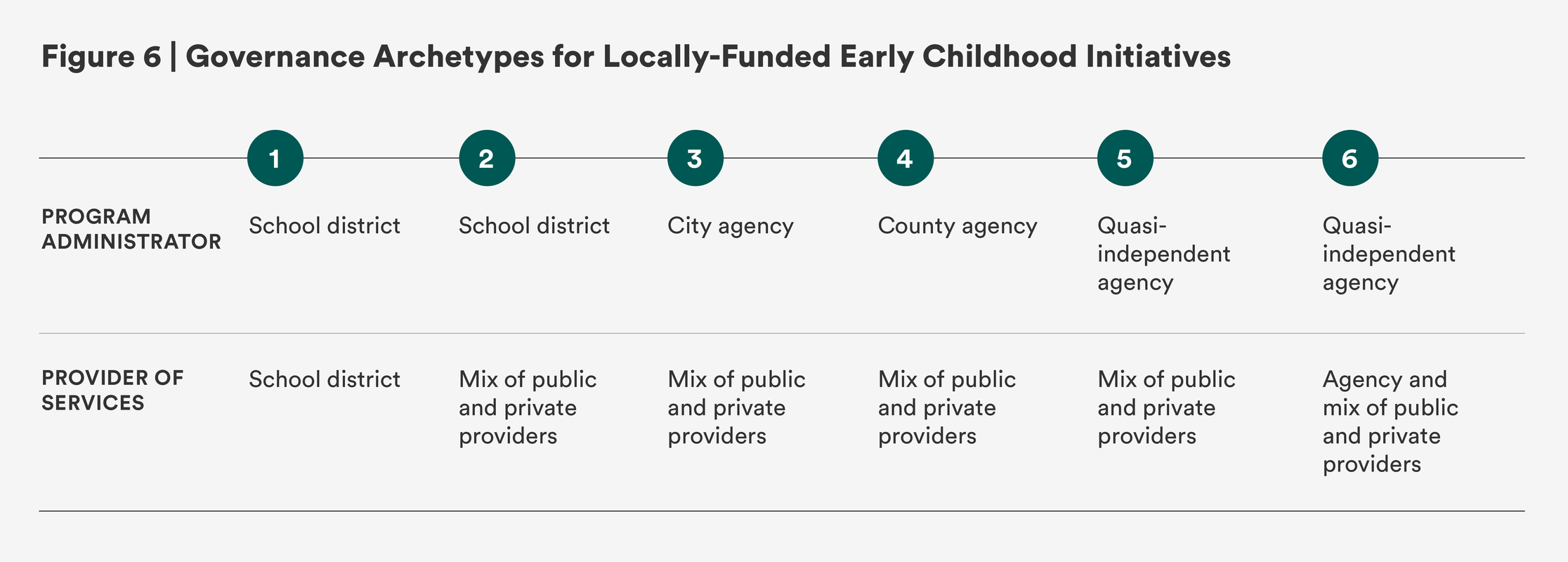Untangling Early Childhood Governance at the Local Level
Understanding Public Pre-K Models at the City and County Level Can Inform Future Program Design
Blog Post

PhotoMavenStock / Shutterstock.com
July 8, 2025
Launching a new service or program can be a bit like getting a driver’s license and the keys to a new car, but it’s a stick shift with an empty tank and no owner’s manual. How do you get from point A to B? For leaders of local public pre-K systems, the answer is not always a straight line, and there is little documentation out there on how to design a new program, or to transform an existing one. A new report from the New Practice Lab and the Early Care and Education Implementation Working Group on local early childhood governance aims to provide clarity and guardrails where none currently exist, supporting the smart design and successful implementation of pre-K programs at city, county, state, and even national levels.
For a country that values families and young children, it comes as a continual shock to many that there is no top-down, universally mandated pre-K program in the United States to connect families with early learning opportunities for young children. The United States is an outlier among peer nations, ranking low in both enrollment of 3- and 4-year-olds in early learning programs, and in GDP spent on kids from birth-to-5 programs in general. It’s not that people don’t want pre-K—we just don’t have enough of it.
To meet demand for these popular and important services, dozens of cities and counties have launched their own public early childhood programs, creatively supplementing Federal and state dollars to go further, over the past two decades. Leveraging local resources to provide children with high quality preschool, these leaders have built new programs from the ground up, expanded smaller programs to serve more children, and scaled towards universal access to pre-K.
This patchwork, locally-driven approach has often meant operating without a playbook. But with dozens of local ECE initiatives now up and running across the country, there is an emerging body of practices and themes supporting program design and implementation that did not exist decades ago when some of these programs launched. The Early Care and Implementation Working Group has gathered the experiences of these leaders and localities to start understanding and mapping local early care and education governance the same way others like Prenatal-to-3 Policy Impact Center and Education Commission of the States have done for states.
Combining years of on the ground program experience of our members along with first of its kind research and analysis, our report introduces six archetypes of local early learning governance, maps governance archetypes to locations where they are in place, and describes the operational strengths and challenges associated with each.

Source: Alex Briñas/New America
While no particular governance model is universally the best, understanding their features will help future program leaders, provider groups, school districts, and parents understand the range of approaches for delivering high quality programs in a variety of settings, and adapt the right model for their context. The report introduces ten questions local leaders can use to help structure and support their design process. In cases where multiple options are on the table, this will better equip communities to make decisions about how to design their own governance model. For programs that are up and running, this resource can help leaders and other stakeholders leverage the strengths of their existing program structure- and plan for and navigate challenges.
Longer term, understanding the nuts and bolts of local public pre-K governance can potentially help policymakers plan for an adaptable system, informed by past practices, that can be scaled and implemented across the country should we ever agree to prioritize early learning at the federal level. One such effort, the Child Care for Working Families Act, creates the authority, funding, and basic framework for such a universal mixed delivery preschool system. When it comes to implementation, the devil is in the details, and past efforts to launch universal nationwide pre-K have been stymied by skepticism and questions about feasibility. We hope that this local governance report, along with some of the other resources the implementation working group has produced, will help educate supporters and skeptics alike, by explaining “how this would actually work” from the perspective of people who are already making it happen.
About the ECE Implementation Working Group
The ECE Implementation Working Group is a group of early childhood education leaders from cities and counties across the country. These leaders gather to share best practices from their experience working with families and local communities, and their work aligns with the New Practice Lab’s theory of change: that implementation lessons should inform policy design from the start. More information about the Working Group can be found here. You can reach out to us with questions about the group and its work at npl_work@newamerica.org.